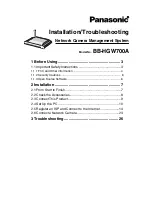
8
Technical Tips:
Lights Turn On and Off Incorrectly
1. Make sure the sensor is installed
on its own dedicated circuit, free
of motor loads such as HVAC
equiptment, kitchen appliances, or
garage door openers.
2. It is not recommended to wire
sensors in parallel. More than
one sensor wired together makes
them difficult to troubleshoot.
Disconnect multiple sensors and
test separately.
3. Keep all people completely out of
the detection pattern to make sure
the sensor is not detecting them.
4. Make sure sensor is located below
and as far as possible from its
lights. Heat from the lights may
trigger the sensor.
Solution:
Move sensor below and
away from the lights.
Do not use with
open par holders.
5. Moths can be attracted to the
lights and fly close to the sensor
causing triggering. Reducing the
sensitivity may help.
6. Make sure sensor is not aimed
within 20 ft of a road or sidewalk.
Passing cars will activate sensor.
Solution:
A 20ft safety zone and
reduced sensitivity are recommended
to avoid activation from passing cars.
7. Heavy rain, snow, or high
winds may activate the sensor
occaisionally. Reduce sensitivity
control slightly until problem
stops.
8. Make sure lights are not reflecting
back into sensor. Check for white
or reflective surfaces close to the
sensor.
Solution:
Aim sensor away from
reflective objects or move the objects
lower and reduce sensitivity.
9. Self-ballasted PL lamps may cause
cycling (on-off).
10. Check item #2, 4, 5, 6 and 7 under
“If Lights Do Not Turn Off.”
20’ Safety Zone
W
R
O
N
G
WRONG
RIGHT!
RIGHT!





































